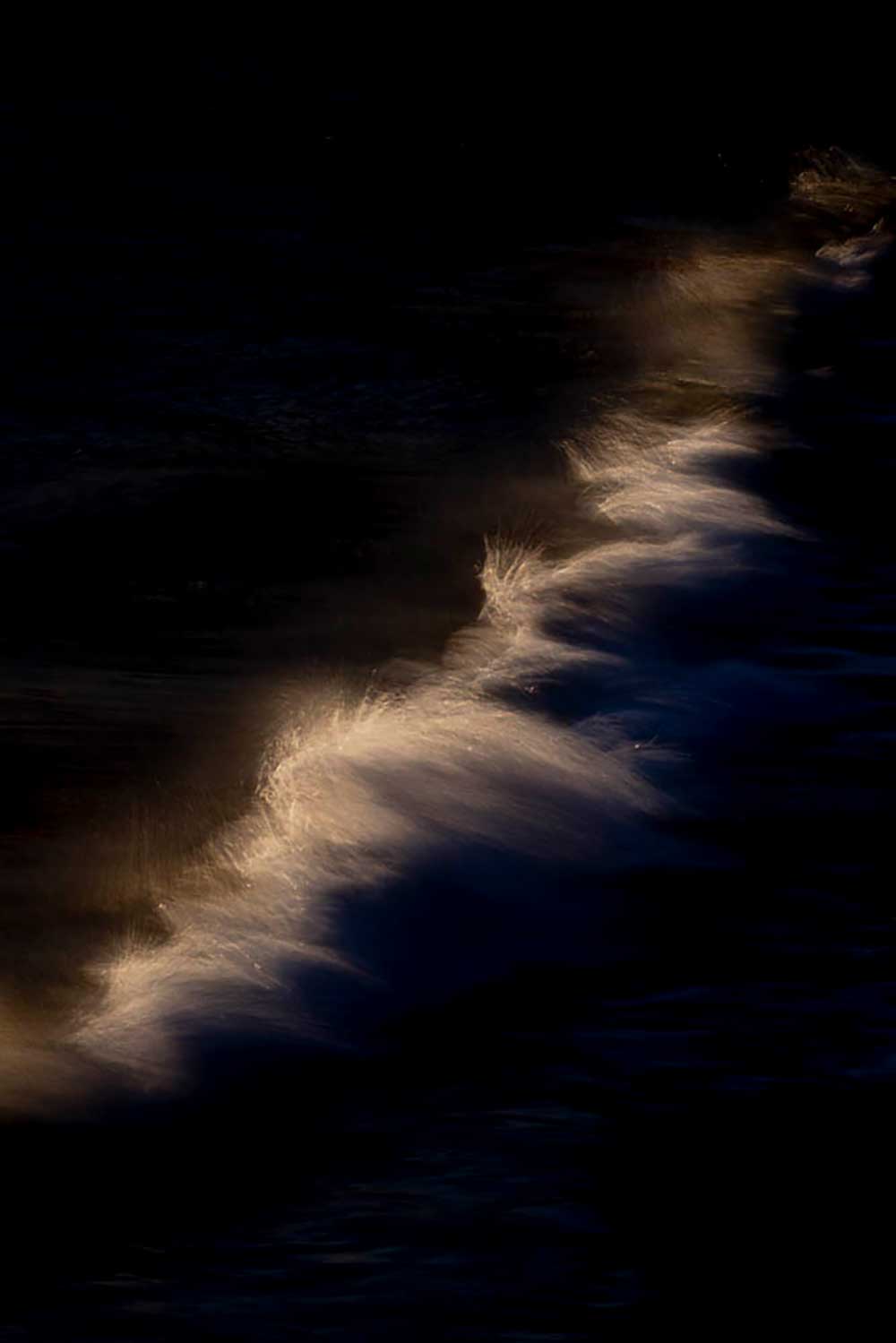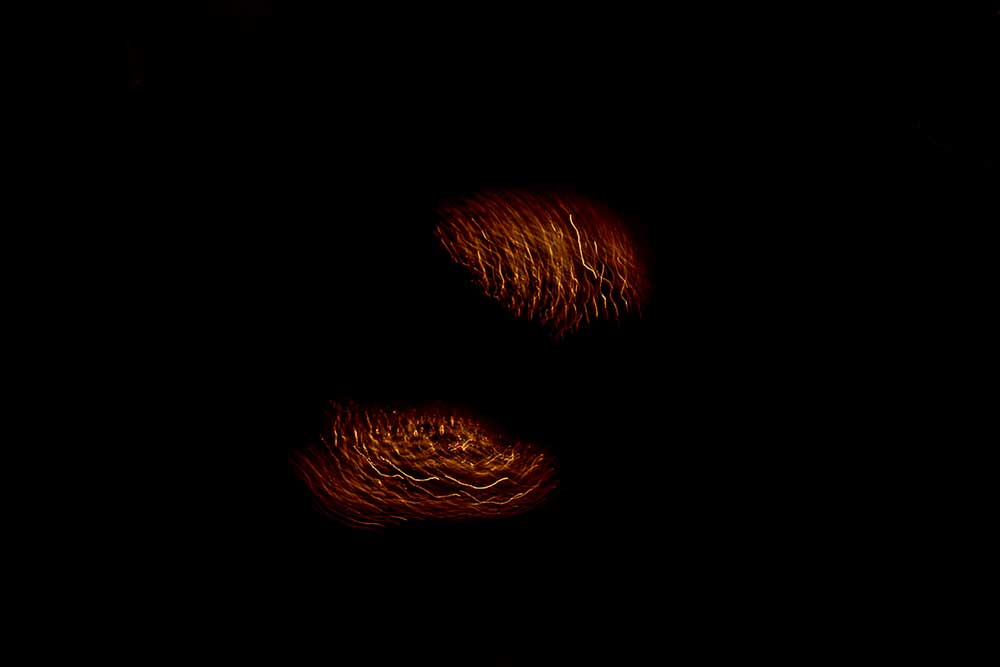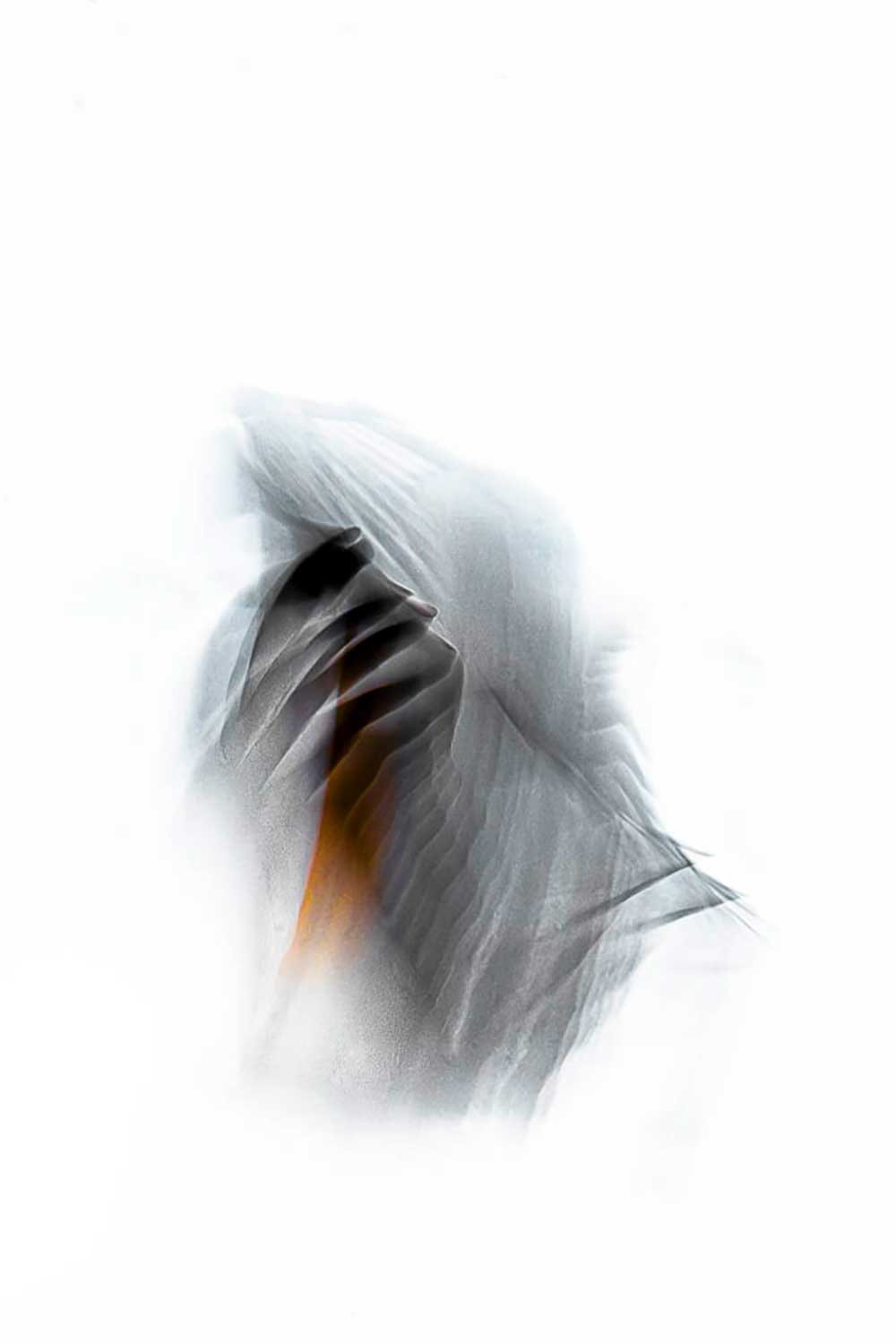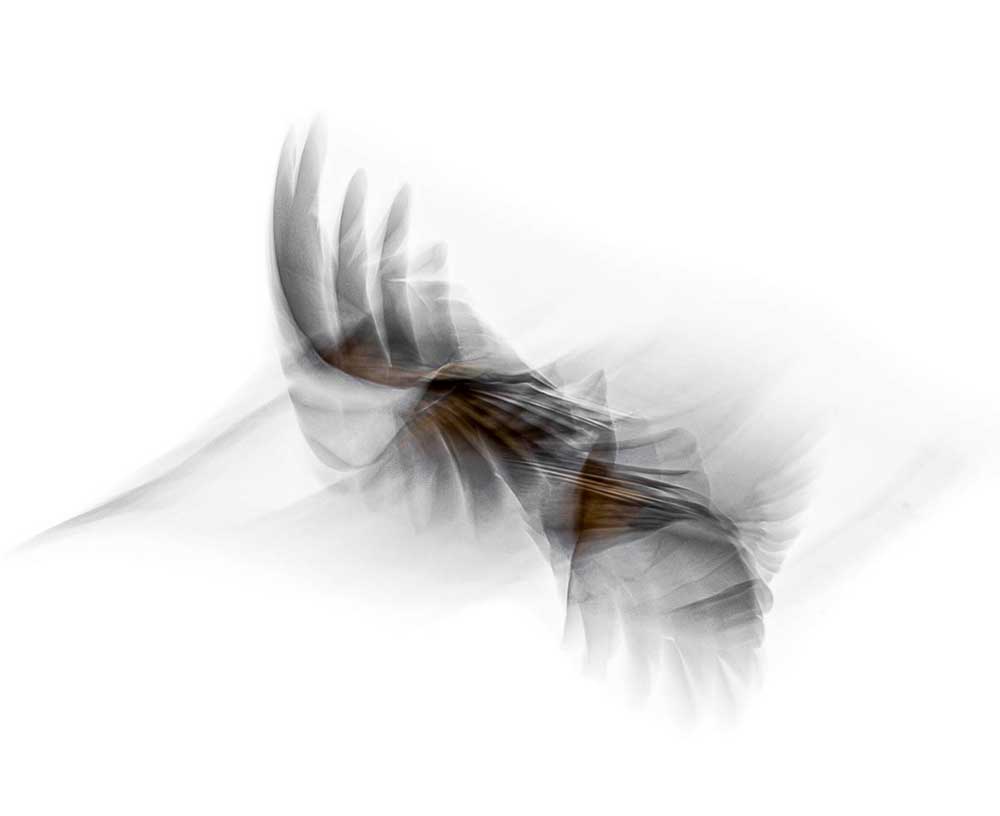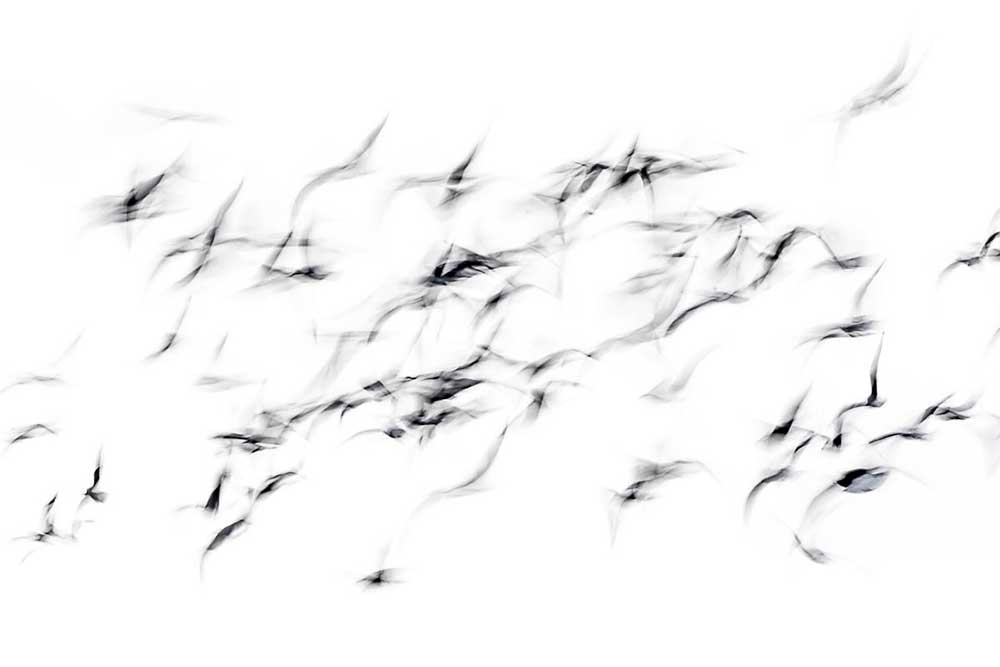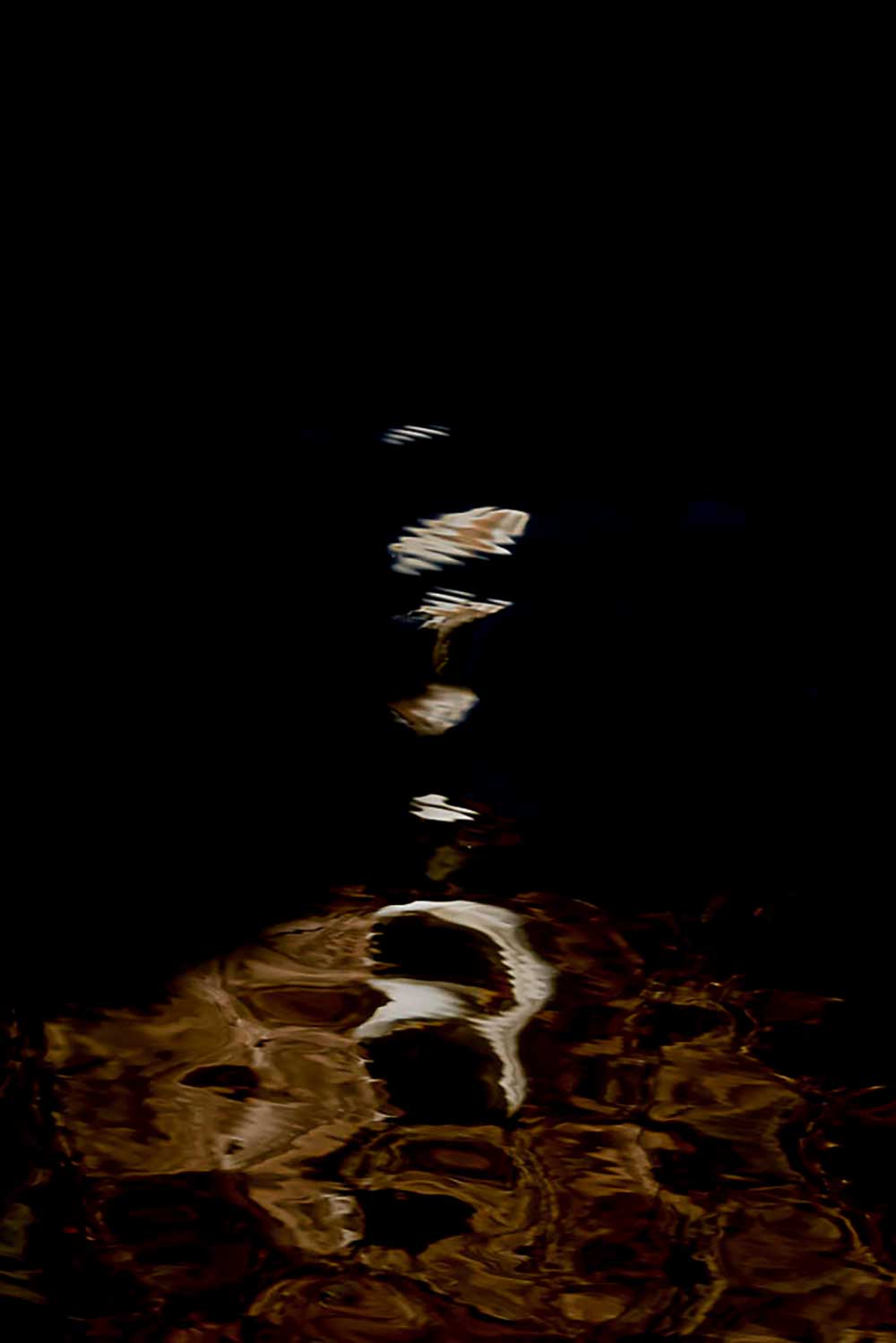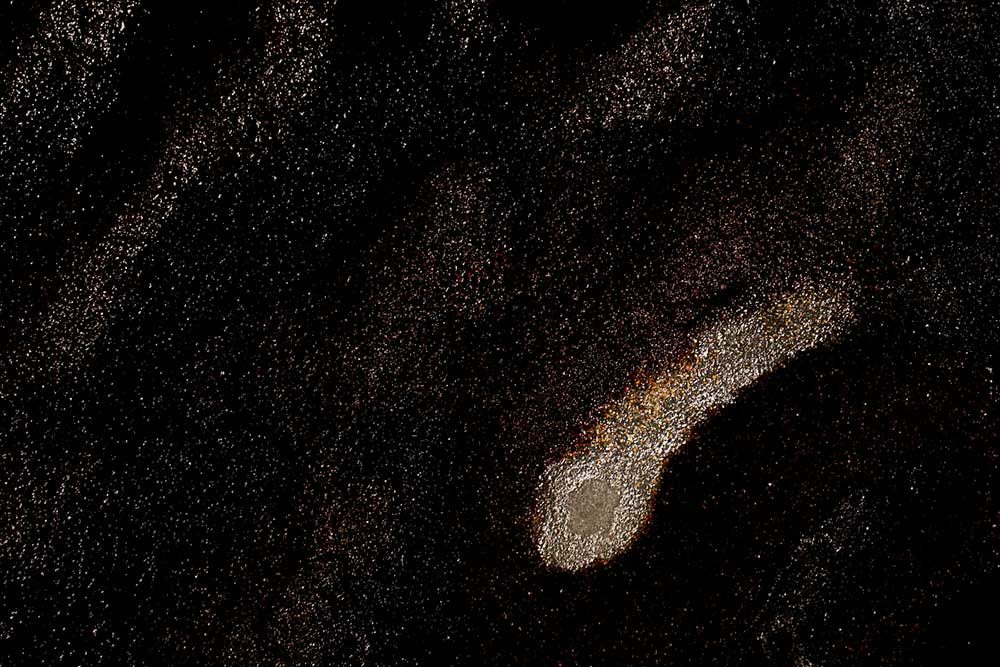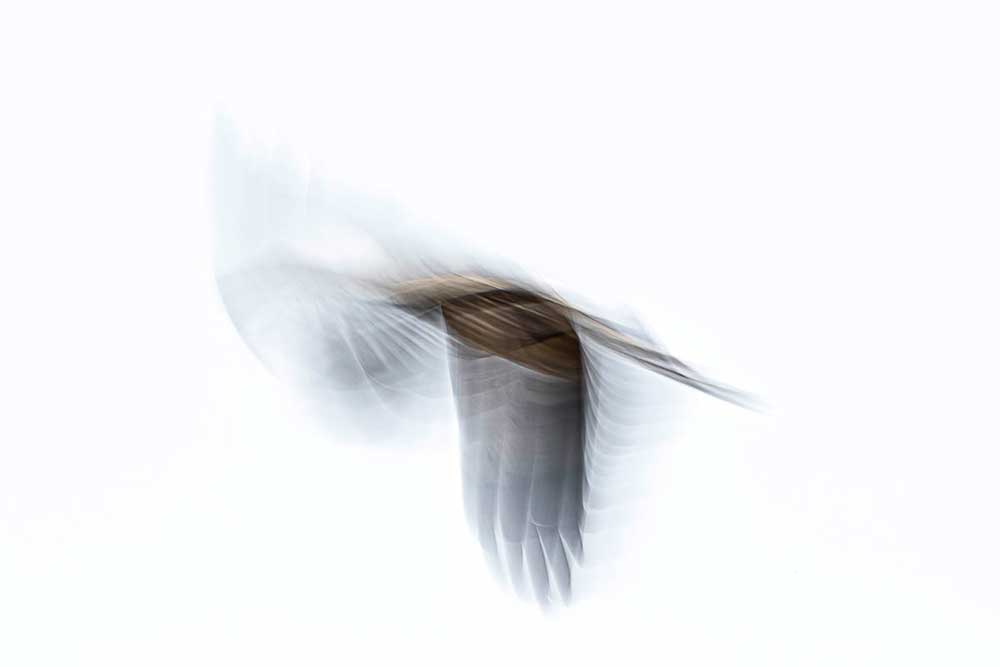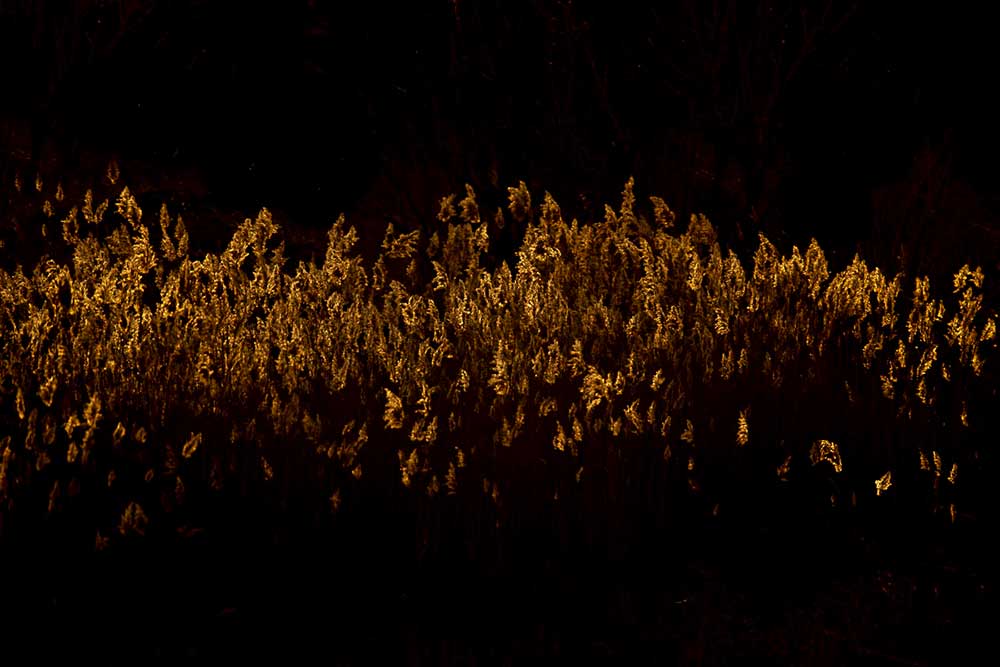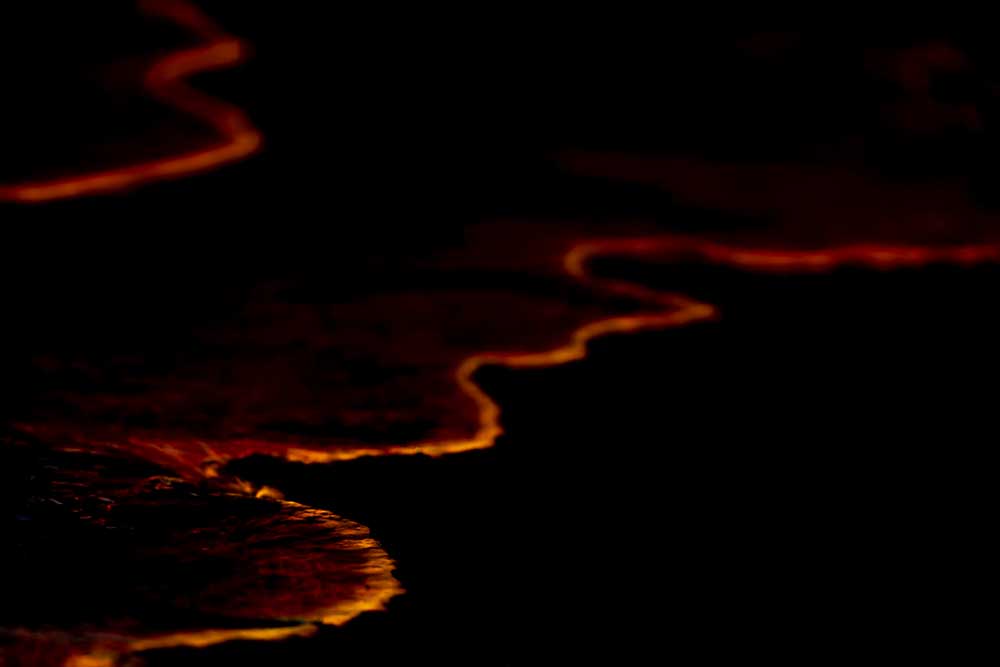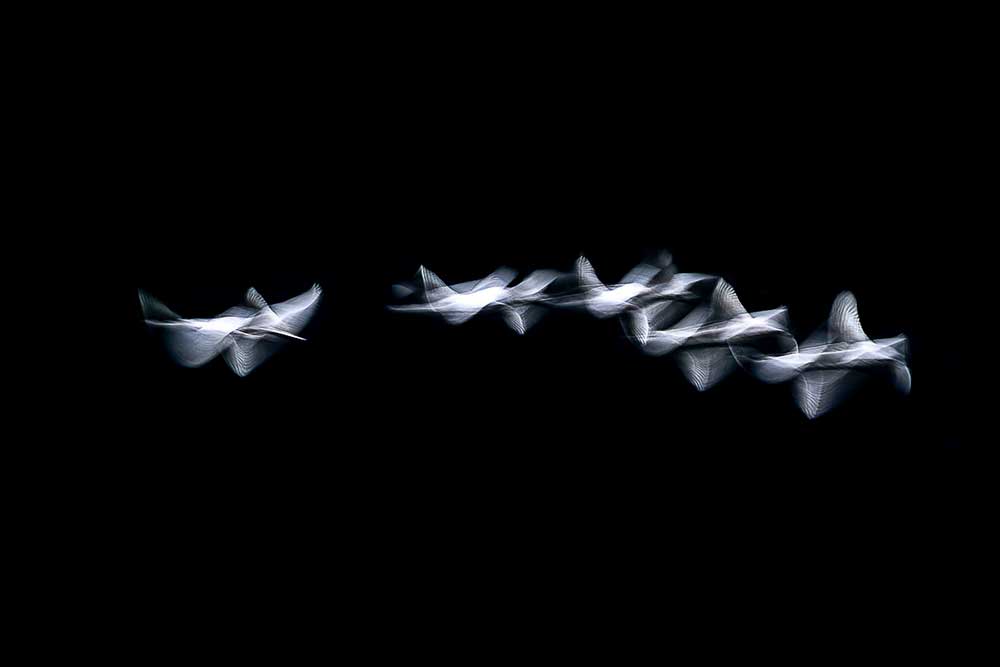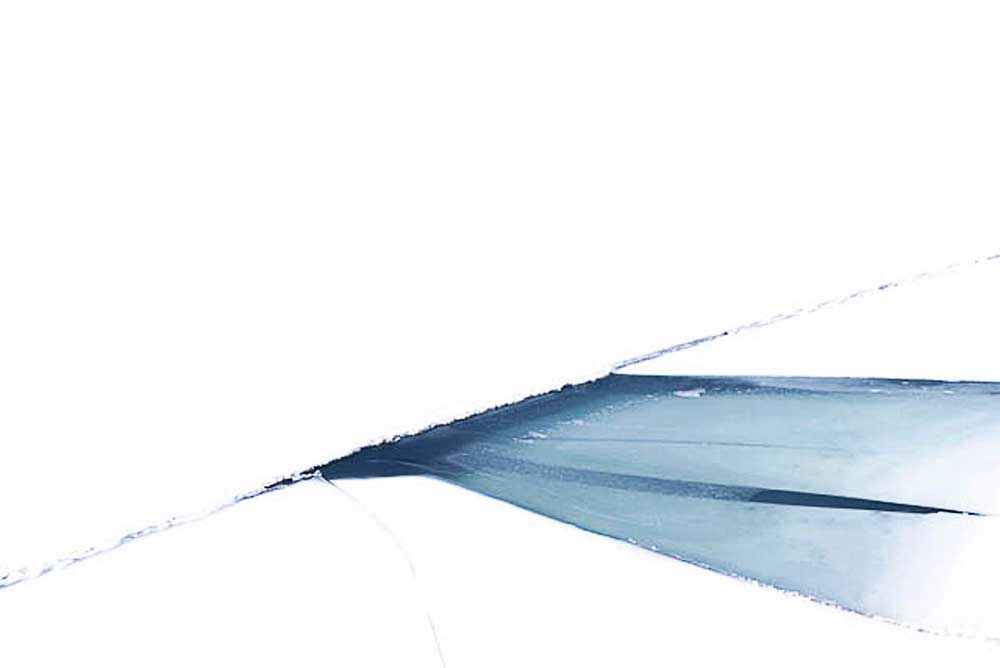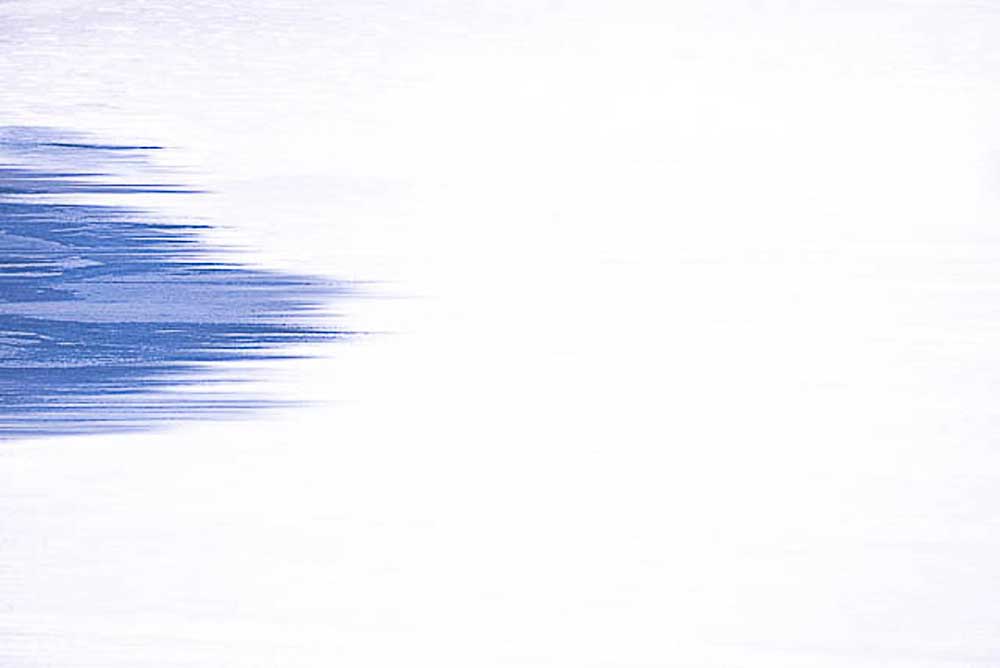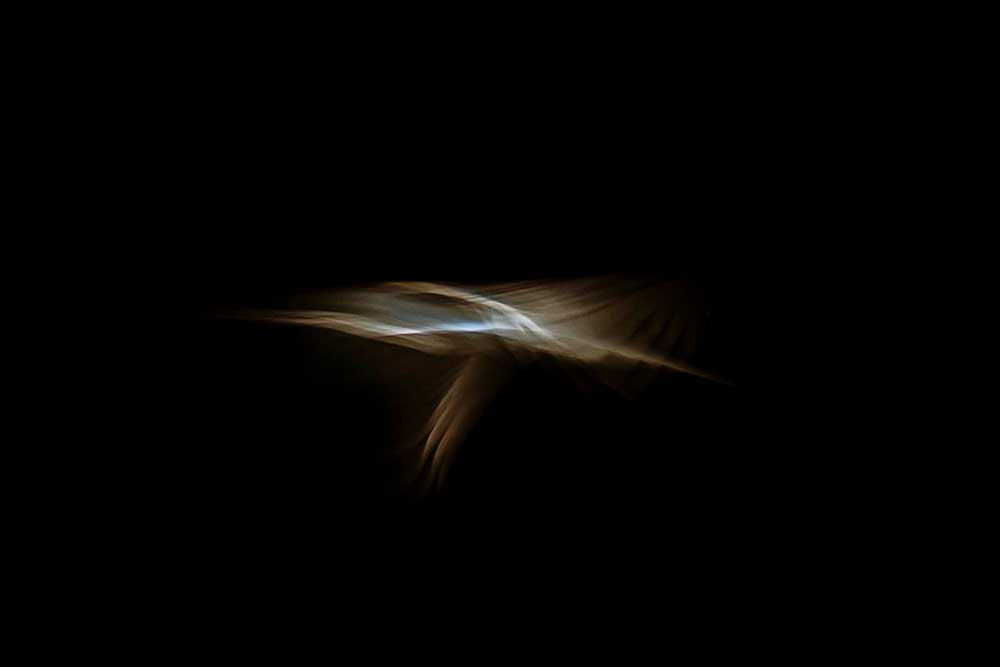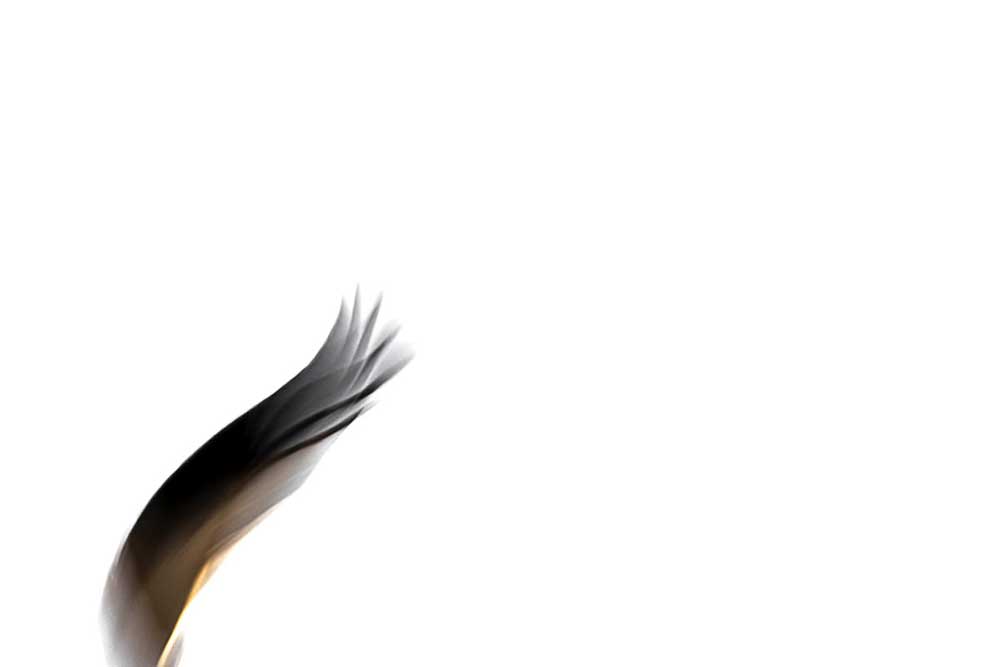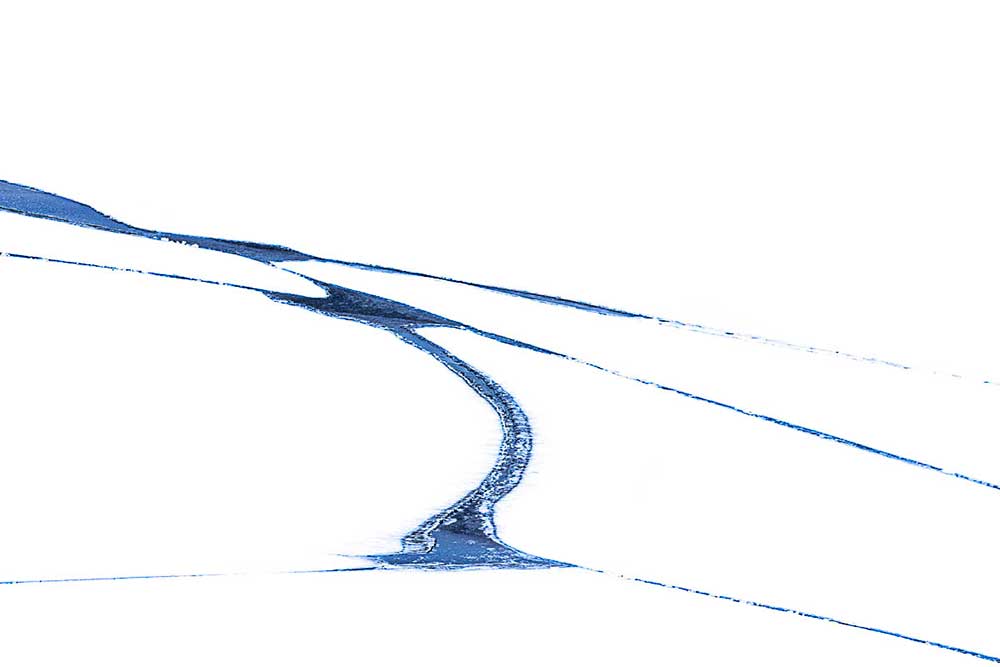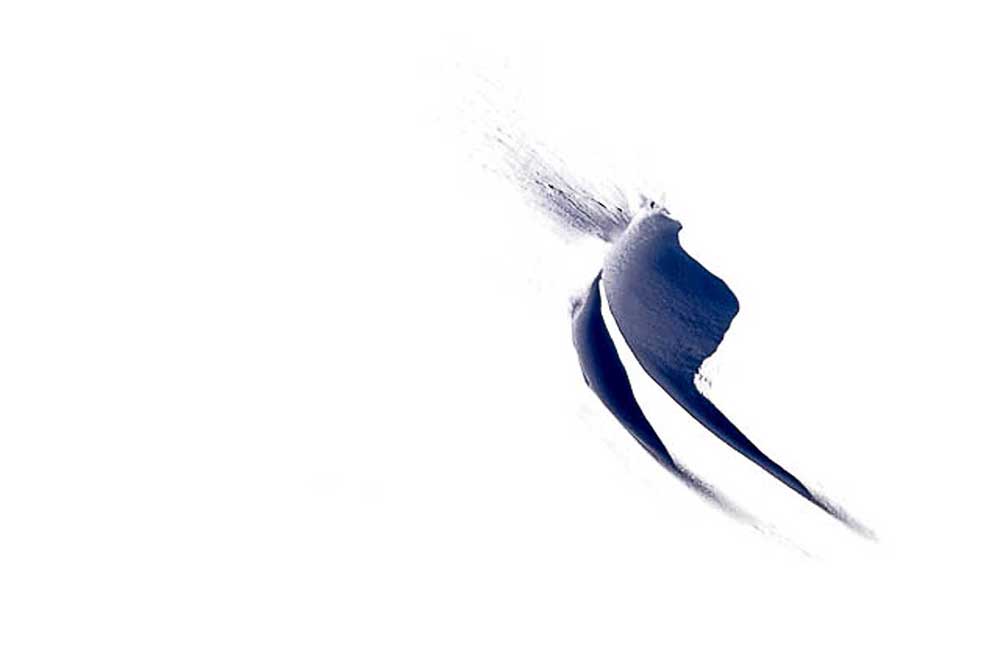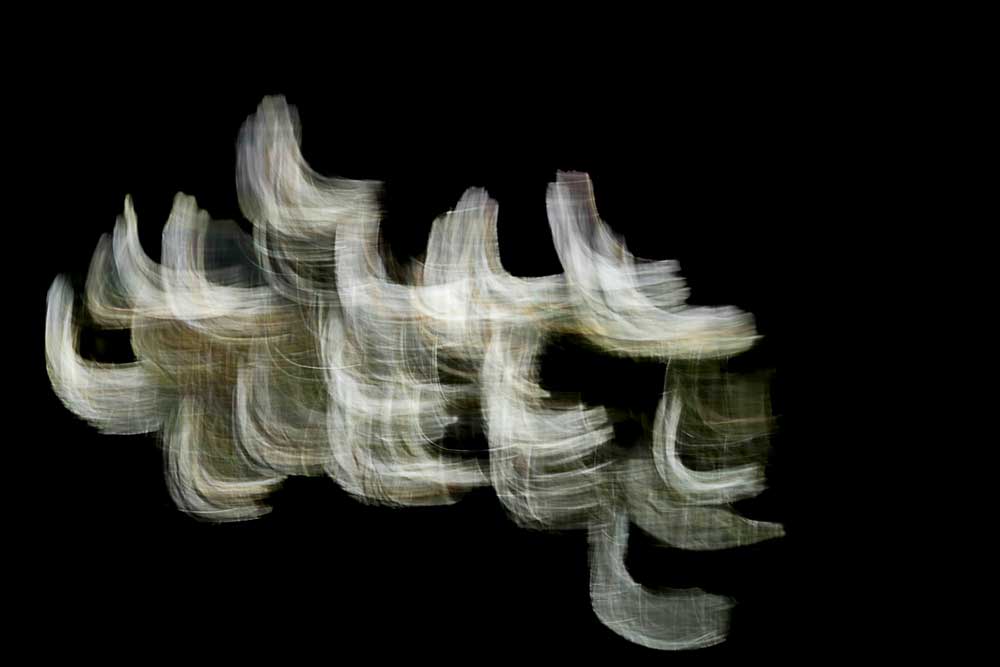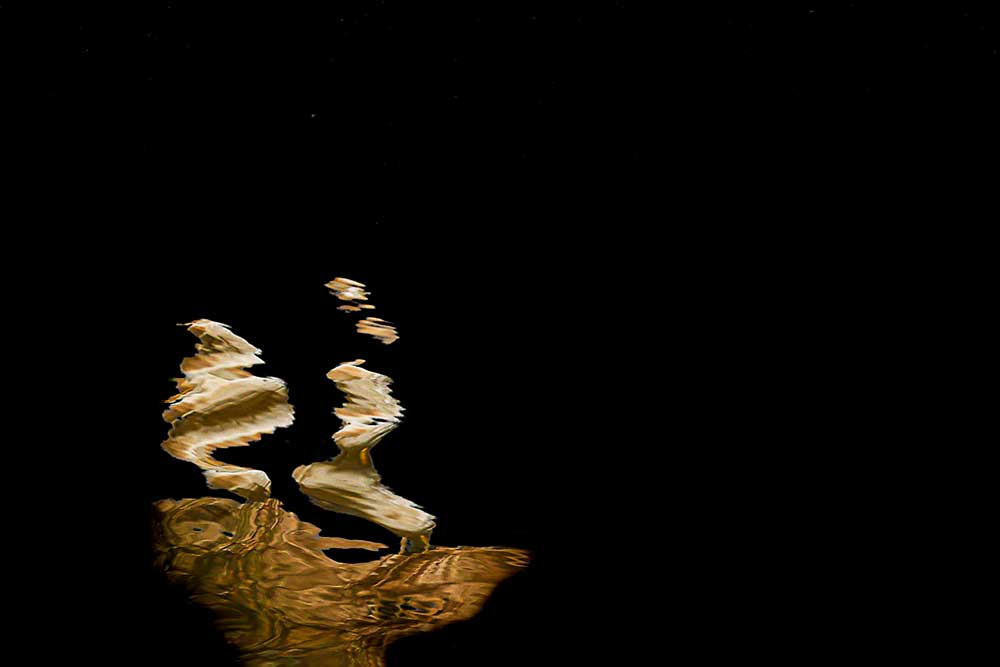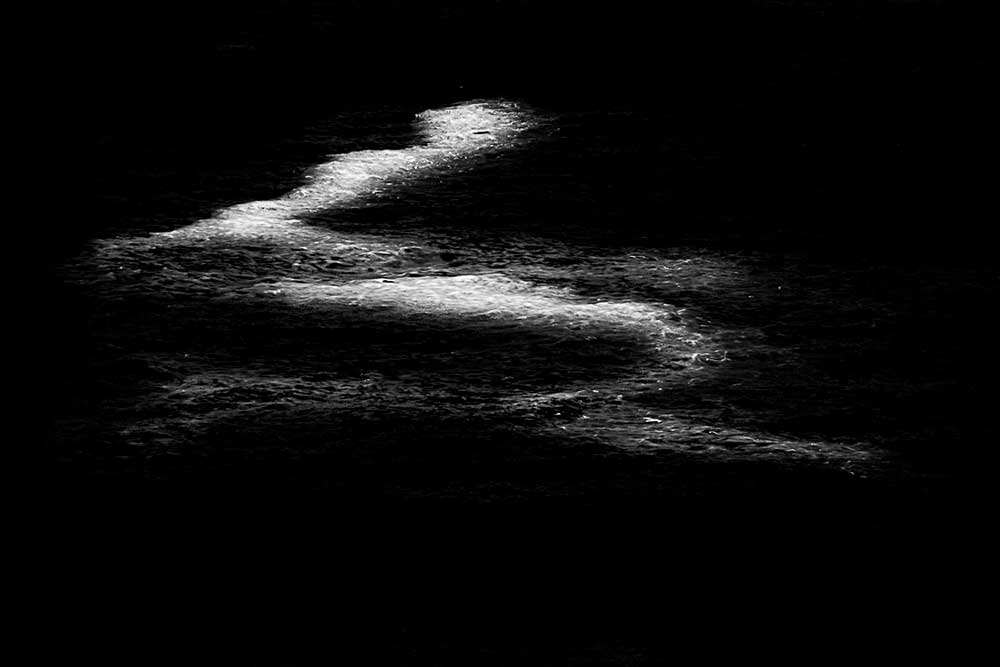We open a body to be born just as a seed cracks the earth to take root. The earth dries up until it splits, the walls of the house crack before collapsing, clothes tear in the desire to reach the other, skin splits because we never fit in our body, our hearts break…
This project is born from pain, from the fracture of my soul and from the appearance of a deep crack in it, but it is also born from hope, from the light that can be glimpsed at the bottom of each crack. Far from the desire to sew up and hide what is broken, I want to give it space and turn it into a process that, paradoxically, would not be creative if it did not break something inside me.
The project consists of photographs that contain light and darkness. In all of them, an undisputed protagonist: the crack, but also its scream and, of course, its negative space. A crack represented in different ways and a negative space painted in white and black, because both, the crack and the cracked, the light and the darkness are elements for which, ironically, there is no possibility of disintegration. Light illuminates shadows and without it we can only remain in darkness. The crack is the slit through which that light sneaks in, but it is also darkness that makes its way by opening up and showing, behind it, the story of each existence.
Leitmotiv Project Gri(e)tas
This project is born from pain, from the fracture of my soul and from the appearance of a deep crack in it. It is born from the need to understand the meaning of the concept. It arises from the need to understand the feeling behind the concept. It comes from the need to scream. From the urgent need to unravel the emotions, sensations, and feelings that were produced in me by being fractured, by feeling how my soul was broken and how, as a result of that break, a crack opened.
But it is also born from hope, from the light that can be glimpsed at the bottom of the crack. It comes from the vision of the possibilities of reconstruction, of rebuilding myself, of the need to integrate the crack into me, as part of me, as an element that defines me and helps me grow.
I started the project at the beginning of the summer following an unexpected and abrupt romantic breakup. That feeling of being on the edge of an abyss, about to fall into it, with nothing to hold on to and seeing how everything I believed built around me collapsed like a house of cards. That realization, slap by slap, that everything I had lived in the previous months was a farce, a crude lie. That facing the mirror and seeing reflected in it how I had allowed my inner voice and my criteria to be annulled. That, only that, all of that, opened a deep crack in my soul. I needed to scream and understand and I needed to find light.
I have always used photography and words to express the feelings of my soul, hence the need to create this anthology of photographs, this collection of screams, this constellation of cracks… Something necessary to silence that voice, that voice that resonated inside me continuously shouting my pain… something essential to resurface.»
Here is the result of that constant buzzing and its analysis: a collection of photographs that reflect, always seeking beauty even in the deepest pain, all the ways of representing what my soul would not stop screaming. Finally, that voice has been silenced and now, from the crack, light emanates.
Presentation of the Gri(e)tas Project
Crack… opening that separates, elongated fissure that is made in the earth or in any solid body, shallow fissure that forms in the skin of various parts of the body or in the mucous membranes close to it, difficulty or disagreement that threatens the solidity or unity of something. Crack…
The abrupt breakup of a romantic relationship triggered in me the need to investigate what lies behind a crack, allowing me, with this investigative process, the beginning of a new photographic project: “Gri(e)tas”.
I needed to think about the concept, revel in its meaning, analyze it from all imaginable perspectives. I did not want to limit myself to the idea associated with the formal meaning of the word: shallow fissure. I sensed that, behind the concept of crack, there was much more, a whole universe of meanings. I needed, in short, to analyze the background behind that word and identify all possible forms of representation.
My first approach, focused on a specific part of the definition of crack, specifically, on “opening that separates,” led me to discover that, under the concept “crack,” we can encompass emotions, sensations, feelings, visions… that is, we can include the negative space of a crack, that is, what breaks to create it; we can feel a crack as the consequence of what has been broken, physically or emotionally, reality or something belonging to our imagination. A crack can be the space that we feel separates us from the world, from the other, from something; the consequences of thinking differently, of feeling differently. The breakup with something, with someone, with everything. The crack, then, opens, breaks, screams, creaks…
But I sensed that there was much more within the concept and I discovered that it included oblivion (crack that separates us from events that have occurred in our life); the distance that separates us from the rest or from oneself in reasoning, in thought; the preamble of opposites; the gap that allows us to escape, the fissure in the side of our emotions, in the center of our thoughts, in the navel of our vanities, in the subsoil of our hatreds… The mist that prevents us from realizing that, a few meters away, paradise or hell could be; heaven or the bottom of the abyss; success or failure; the summit or the slope… I discovered that the crack, necessarily, separates, leaving us on the edge of an abyss without knowing the depth of the inside even when it is our own.
And why not… the crack is the space through which light enters, hope, the space through which something flourishes amid devastation, the opening to the light necessary to discover and travel other ways of approaching reality, other ways of investigating, to stimulate doubt and activate thought. The crack allows us to recognize ourselves in those breaks that define our identity.
The crack is, therefore, the recognition of a fractured element and what breaks in it according to its struggles. But also a rupture that lets light pass, that allows the experience through which we are building our personal narrative composed of memory, emotions, feelings, sensations…
We open a body to be born just as a seed cracks the earth to take root. The earth dries up until it divides, the walls of the house crack before collapsing, clothes tear in the desire to reach the other, skin splits because we never fit in our body, our hearts break. Far from the desire to sew up what is broken and hide it, I had to give space to that process that sprouted from within me and that would not be creative if it did not break something inside me.
I also noted that the crack allows a new life, that of another, the one who separates, and our own, that of the separated. I realized that the crack transforms us, often, into something even more beautiful than we were before its existence. The cracks are, therefore, a confirmation of our history, and as such, they should be a reason to be shown, a reason that should lead us to praise them and a way to show the world those fractures that life has caused us and that define us.
A crack shows that internal and external evolution, paradoxically, arises from wounds and imperfections. It allows us the acceptance of damage, it allows us to demonstrate that accepting it helps us to be stronger, that its birth does not necessarily mean our end but quite the opposite and that, thanks to it, we can start a process of evolution, a process that also teaches us the idea that hiding our fragility should lack all meaning. A crack teaches us that, accepting what breaks inside us allows us to acquire serenity and composure. A crack allows us to rethink our closest reality, it offers us the possibility of recomposing ourselves. A crack shows the world that we are alive.
In the words of H. Hesse, one of my favorite authors: “it was a first tear in the sanctity of the father, a first crack in the pillars on which my childhood had rested and which every man has to destroy before he can become himself. These events that no one sees make up the essential, internal line of our destiny. The tear, the crack, then closes, heals, and falls into oblivion, but in our inner secret chamber it persists and continues to bleed.”
With this project, I not only want to recognize the universe that cracks contain but to see from them; from the ‘blind spots’ that we insist on hiding. Their positive spaces, but also the negative ones, their origins, and their consequences. The beauty they contain. The possibilities they offer.
Content
The project consists of twenty-eight photographs. All of them with light and darkness, all of them with an undeniable protagonist: the crack, and, of course, the negative space surrounding it represented in this myriad of photographs in white and black color, because both, the crack and the cracked, the light and the darkness are omnipresent elements in the universe to which the cracks belong and for which there is, ironically, no possibility of disintegration. The light illuminates the shadows and without it we can only remain in darkness, and the crack is the fissure through which that light seeps, but also the darkness that makes its way by opening wide and revealing, behind itself, the history of each existence.
In spite of the origin in a fracture of this project, I seek beauty, peace, inner connection… I aim to facilitate a process of introspection that allows us to find, converse with, and accept the cracks that we all have and that, in some way, define us. I seek reconciliation with that self which complements us and I seek it, as always, through nature and with the tapestry of beauty, the leitmotif of my photographic work, to assert that beauty always emerges, as it could not be otherwise, from a crack.



